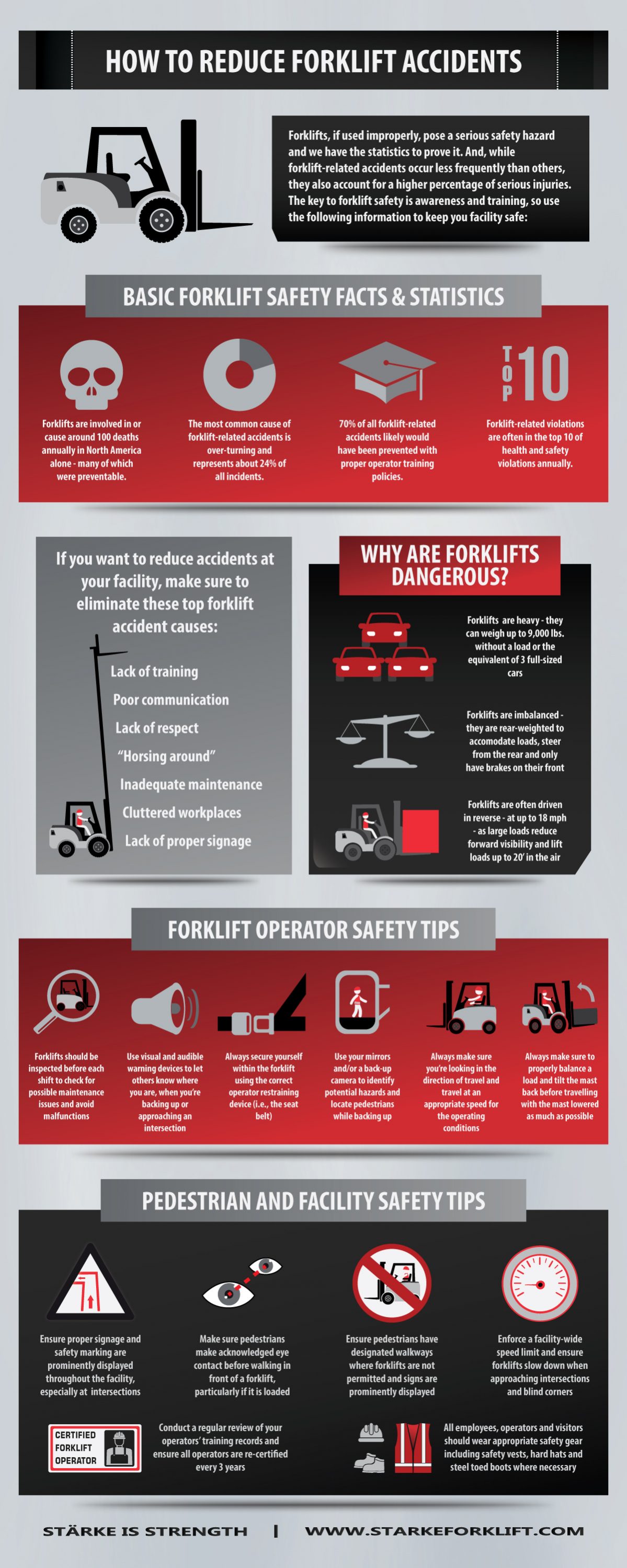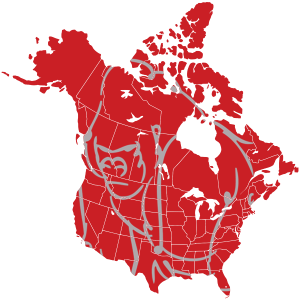Forklifts, if used improperly, pose a serious safety hazard and we have the statistics to prove it. And, while forklift-related accidents occur less frequently than others, they also account for a higher percentage of serious injuries. The key to forklift safety is awareness and training, so use the following information to keep you facility safe:
NOTE: Click image to enlarge
Basic forklift safety facts and statistics:
- Forklifts are involved in or cause around 100 deaths annually in North America alone – many of which were preventable.
- The most common cause of forklift-related accidents is over-turning and represents about 24% of all incidents.
- 70% of all forklift-related accidents likely would have been prevented with proper operator training policies.
- Forklift-related violations are often in the top 10 of health and safety violations annually.
If you want to reduce accidents at your facility, make sure to eliminate these top forklift accident causes:
- Lack of training
- Poor communication
- Lack of respect
- “Horsing around”
- Inadequate maintenance
- Cluttered workplaces
- Lack of proper signage
Why are forklifts dangerous:
- Forklifts are heavy – they can weigh up to 9,000 lbs. without a load or the equivalent of 3 full-sized cars.
- Forklifts are imbalanced – they are rear-weighted to accomodate loads, steer from the rear and only have brakes on their front tires.
- Forklifts are often driven in reverse – at up to 18 mph – as large loads reduce forward visibility and lift loads up to 20’ in the air.
Forklift Operator Safety Tips:
- Forklifts should be inspected before each shift to check for possible maintenance issues and avoid malfunctions.
- Use visual and audible warning devices to let others know where you are, when you’re backing up or approaching an intersection.
- Always secure yourself within the forklift using the correct operator restraining device (i.e., the seat belt).
- Use your mirrors and/or a back-up camera to identify potential hazards and locate pedestrians while backing up.
- Always make sure you’re looking in the direction of travel and travel at an appropriate speed for the operating conditions.
- Always make sure to properly balance a load and tilt the mast back before travelling with the mast lowered as much as possible.
Pedestrian and Facility Safety Tips:
- Ensure proper signage and safety marking are prominently displayed throughout the facility, especially at intersections.
- Make sure pedestrians make acknowledged eye contact before walking in front of a forklift, particularly if it is loaded.
- Ensure pedestrians have designated walkways where forklifts are not permitted and signs are prominently displayed.
- Enforce a facility-wide speed limit and ensure forklifts slow down when approaching intersections and blind corners.
- Conduct a regular review of your operators’ training records and ensure all operators are re-certified every 3 years.
- All employees, operators and visitors should wear appropriate safety gear including safety vests, hard hats and steel toed boots where necessary.
See more forklift safety tips in our infographic detailing our top forklift safety tips.


